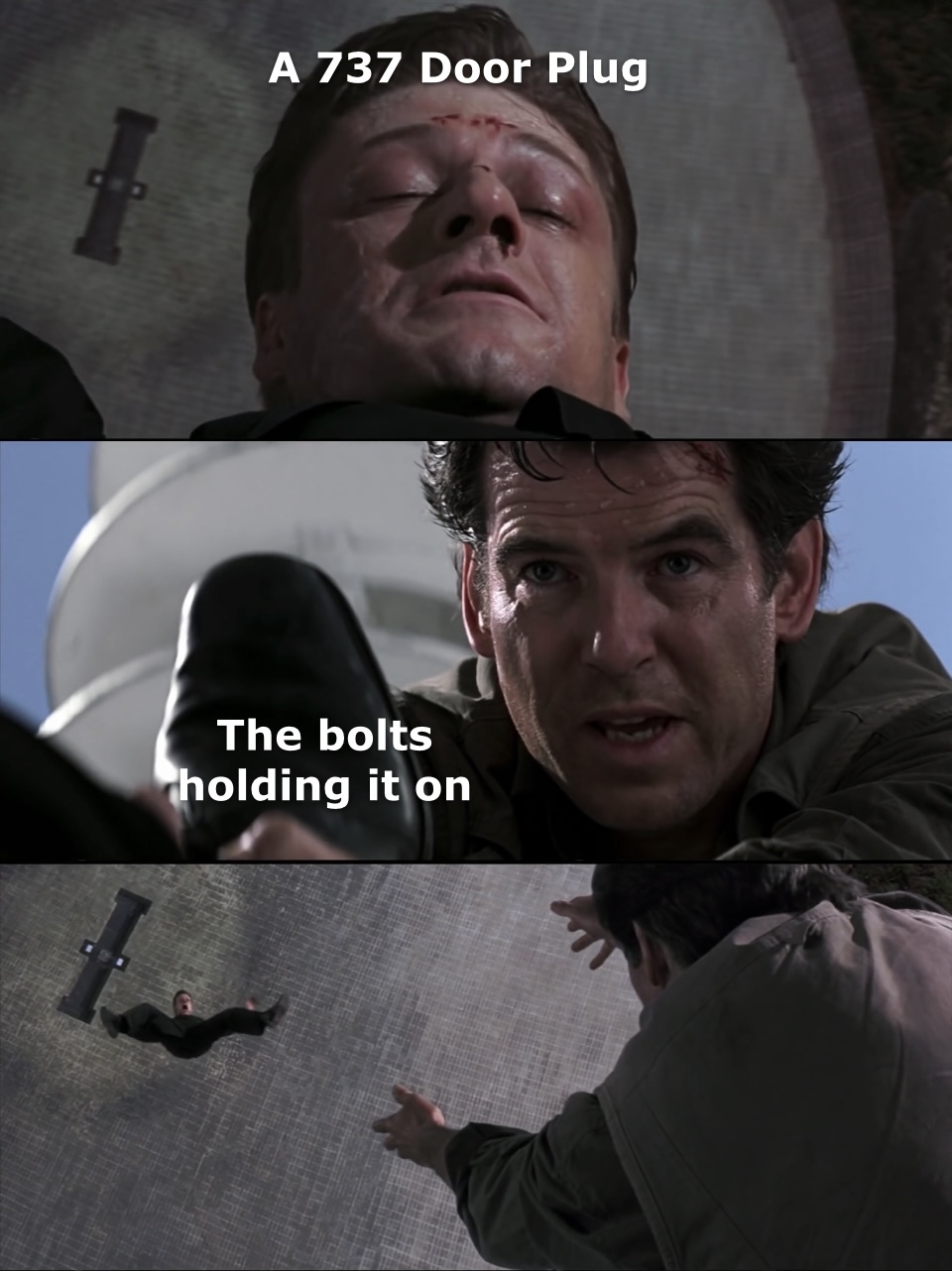this post was submitted on 04 Feb 2024
238 points (98.0% liked)
Memes
44148 readers
2681 users here now
Rules:
- Be civil and nice.
- Try not to excessively repost, as a rule of thumb, wait at least 2 months to do it if you have to.
founded 5 years ago
MODERATORS
you are viewing a single comment's thread
view the rest of the comments
view the rest of the comments

There was an early news story where the subcontractor claimed that it wasn't their responsibility to tighten the door plug bolts before delivering the entire fuselage subassembly to Boeing.
I haven't been keeping up with this news in detail, so it certainly seems plausible to me that some planes were found to be missing bolts entirely.
I remember reading the same thing, and iirc they were right. The subcontractor builds the fuselage and delivers it to boeing.
Boeing then opens up whatever doors and plugs will make it easier to install the interior. Once the interior is installed, they're supposed reinstall and secure all the doors and plugs. Because Boeing is going to be opening them all up, they don't bother to fully secure them.
That said, it sounds like a process that's just asking for miscommunication. If you expect the part to be removed, just deliver the part separately. If you put the part in it's place, then fully install it and secure it.
It's a pretty standard process to have some parts installed "loose" and tightened at a later time. It could be to ensure fitment, add rigidity or even just to protect the mating surfaces from the elements during transport.
Also it's probably not just because Boeing is gonna open them up that they don't fully secure them. I haven't seen the specs but it's quite common to have a reinspection requirements when disassembling something that was fully installed for stress and damage.
Pretty much nothing in aerospace is left to communications. The assembly manuals are not just complete, they are painfully exhaustive.
It's much easier to temp install parts than design tools to hold the parts on the rail car or ship them in crates.
The wingbox gets corrugated plastic covers to keep the elements out during shipping. The wingbox doesn't exactly need help being stout, though.
This one said the informal log showed they had to remove the door module ( thus bolts ) but no record of reinstalling them...and they run two logging systems so not all info is captured in the other.
It used to be boeing made their own planes
If I remember right, these fuselage assemblies get transported on a giant beluga-looking airlift airplane. Where the whole nose is the plane opens up to swallow fuselage sections whole.
If you ship the door plugs uninstalled, you're probably looking at a while separate shipment.
It gets installed before the fuselage goes onto the railcar at Spirit Aerosystems and Boeing removes it while they finish the interior.
The latest iteration of the data I’ve found is that Boeing and Spirit (the subcontractor) used different QC systems that weren’t fully compatible; one of the areas of incompatibility is around manufacturing and maintenance procedures of the plug door, and nobody put a process in place to account for that (if you’re in tech, you know that means it was considered “tech debt” that can be fixed “later”).
This one said the informal log showed they had to remove the door module ( thus bolts ) but no record of reinstalling them...and they run two logging systems so not all info is captured in the other.